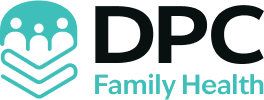“What’s one unexpected challenge you faced when implementing personalized healthcare for your family? How did you overcome it and what did you learn?”
The complexity of integrating diverse data, such as medical history and lifestyle habits
A key challenge in implementing personalized healthcare for a family is the complexity of integrating diverse data, such as medical history and lifestyle habits, from various providers. To address this, establishing a centralized platform is essential, using tools that facilitate interaction between family members and healthcare providers. Mobile apps that aggregate health data from wearables and online records empower families to make informed decisions about their healthcare interventions.
Mohammed Kamal, Business Development Manager, Olavivo
Information overload and conflicting advice
One of the biggest challenges I faced when implementing personalized health for my family was information overload and conflicting advice—especially when trying to customize diets and supplements for each person. I had good intentions, diving into genetic reports, food sensitivity tests and wearable health data but it got overwhelming. Different sources contradicted each other and I found myself second guessing every decision.
To overcome this, I stepped back and focused on simplifying and collaborating with professionals. I scheduled a session with a functional medicine practitioner who helped us make sense of the data in a practical way. We narrowed it down to one or two changes per person—like adjusting meal timing for one family member and reducing inflammatory foods for another.
What I learned was that personalized health doesn’t mean doing everything at once or doing it alone. It’s about gradual, informed decisions and finding experts who can translate complex information into actionable steps. Most importantly I realized that personalization should support our lives not complicate them.
Sovic Chakrabarti, Director, Icy Tales
The complexity of managing multiple healthcare data sources
I faced challenges in implementing personalized healthcare for my family due to the complexity of managing multiple healthcare data sources. Coordinating information from various providers and technologies led to confusion and potential miscommunication. A key struggle was ensuring that all family members understood and effectively used their health data. This mirrors the difficulties affiliate marketers face in personalizing customer messaging while ensuring data security and privacy.
Michael Kazula, Director of Marketing, Olavivo
It was consistency
The hardest part of implementing personalized healthcare for my family wasn’t access or information, it was consistency. I assumed that once we set personalized goals, everyone would follow through. That didn’t happen. Life got busy. Priorities shifted. Some days we nailed it, other days we slipped. What worked for one child didn’t work for the other. What I thought was “personalized” often became unrealistic.
One example was nutrition. My younger child had food sensitivities, while my older one had no restrictions but resisted vegetables. We tried individualized meal plans. They worked for a week, then fell apart. We argued more at the table than we solved. I stepped back and simplified. We built a short list of five meals everyone could agree on: clean, whole, and easy to prepare. I involved the kids in choosing and prepping the food. Ownership changed everything.
I also realized that “personalized” doesn’t mean perfect. It means practical. We created visual trackers on the fridge for sleep, water, and movement. We celebrated small wins. Instead of chasing ideal health routines, we focused on what was sustainable.
In my practice, I guide parents through these same struggles. At home, I had to remind myself of my advice: routines fail if they aren’t built around real life. Personalized healthcare only works when you make it simple enough to stick. What systems do you have in place when motivation disappears? If you don’t know, that’s the place to start.
Dr. Jasveen Singh, Pediatric Dentist & Owner, Pediatric Dentistry And Beyond
Managing the varying levels of technology comfort across different age groups
One unexpected challenge I faced when implementing personalized healthcare for my family was managing the varying levels of technology comfort across different age groups. My parents, for instance, were hesitant to use the health tracking apps I set up for them, while my younger siblings were eager to adopt them. I realized the key was to make it as simple and accessible as possible.
I started by setting up a shared family health dashboard, where everyone’s data could be monitored in real-time, and I walked my parents through it step by step. The biggest learning was that technology needs to be customized not just for health needs but also for the user’s comfort level. Now, everyone is more engaged, and we’ve built a routine where we track progress together, which makes it easier to stay on top of our health goals.
Nikita Sherbina, Co-Founder & CEO, AIScreen
To get different specialists to acknowledge the mind-body connection
We tried to implement personalized healthcare for a family member dealing with both chronic anxiety and autoimmune issues. What we didn’t expect was how difficult it would be to get different specialists to acknowledge the mind-body connection. The mental health provider focused only on cognitive patterns. The internist looked at symptoms through a biological lens. Neither saw the full picture. No one coordinated care.
We built a care map. We listed every provider, treatment plan, and appointment. We brought records to each session and shared relevant updates ourselves. We found a therapist trained in somatic therapy who understood how trauma impacts physical health. That shifted the outcome. When mental health treatment aligned with medical care, progress followed. Symptoms flared less. Coping strategies held. The patient felt seen as a whole person.
Most families think their providers talk to each other. They don’t. And when conditions overlap, that silence leads to setbacks. Personalized care only works when each professional understands the full context.
This experience changed how I evaluate care. The number of providers means nothing if they act in isolation. Integration is not a bonus. It’s the baseline.
Steven Buchwald, Managing Director, Manhattan Mental Health Counseling
The Hidden Complexity of Family Healthcare Integration
I learned from experience the frustrating and unanticipated problem of integrating various sources and systems of medical information as I tailored healthcare for my own family. Every doctor’s office had its system so information didn’t flow well, treatment was delayed, miscommunication.
So I created an all-in-one health management app to keep everything organized and make sure I never miss an appointment again! Though it was time-consuming at first, it sped communication and allowed me to make sure that every family member’s care was as customized and informed as it could be.
I learned how important having an interoperable healthcare system is. You see, I discovered that in a world of accelerating health technologies, the real hard problem is orchestrating disparate data sources to deliver better care.
Blen Tesfu, MD, Welzo
Fragmented healthcare records
I never imagined my experience with tech and systems would come into play when trying to get the right diagnosis for my dad — but it ended up being the only reason we got him the care he needed.
One challenge we didn’t foresee was how fragmented healthcare records would be in Mexico. After my dad went through some unusual fatigue and got misdiagnosed twice, it occurred to me that the barrier wasn’t just medical but operational. Each provider was operating in silos – there was no digital record sharing, no clear history, and no coordination in the care that crossed specialties.
So, I did what I would do in my business at RentMexicoCity.com: I created a “healthcare dashboard” customized for my family. Using Notion and Google Drive, I set up structured logs of symptoms, test results, prescriptions and appointments. We took it upon ourselves to log everything we had been prescribed and recorded the our records and brought them to each of the doctors. That small digital platform was the key to helping a new specialist link together some symptoms and ultimately discover a cardiac issue that could have become critical.
What did it teach me? Personalized healthcare is not just about precision medicine – its about organized medicine. Especially in countries where systems do not speak with each other, the family needs to become the system.
This experience radically shifted my perspective about care. As someone who has spent their entire career lovingly curating journeys for customers relocating to Mexico, I am now taking the same philosophical approach to family health – map the user journey, reduce friction, and foresee blind spots.
Martin Weidemann, Owner, RentMexicoCity.com
Resistance to Change and Over-Reliance on Traditional Habits
Challenge: Resistance to Change and Over-Reliance on Traditional Habits
While trying to implement evidence-based lifestyle and dietary changes for a family member with early signs of metabolic syndrome, I encountered unexpected resistance. Despite medical explanations, they were hesitant to shift away from culturally ingrained eating habits and preferred home remedies over structured medical advice.
How I Overcame It:
I changed my communication approach—from instructing as a doctor to speaking empathetically as a son/nephew.
I involved them in the process by explaining the “why” behind each recommendation using relatable examples, not just clinical terms.
I introduced small, sustainable changes (e.g., reducing portion sizes, walking after meals) rather than drastic overhauls.
I celebrated small wins (e.g., improved blood pressure readings) to build trust in the new approach.
I also engaged other family members for emotional reinforcement and accountability.
What I Learned:
Medical knowledge alone isn’t enough—implementation requires cultural sensitivity, patience, and behavioral insight.
Personalization goes beyond lab results; it involves adapting care to a person’s mindset, beliefs, and readiness to change.
Motivational interviewing techniques and involving patients in decision-making are as valuable at home as they are in clinical settings.
Ultimately, compassion and communication can make even the most resistant patients open to positive health change—especially when they’re family.
Austin Anadu, Doctor, Invigor Medical

